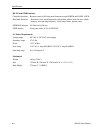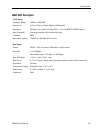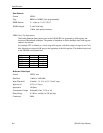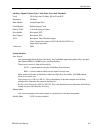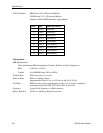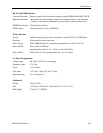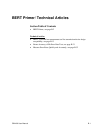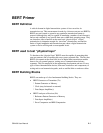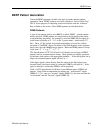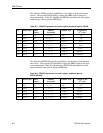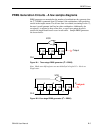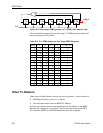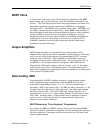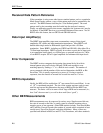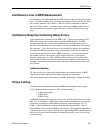GB1400 User Manual B-2
BERT Primer
BERT Definition
A critical element in digital transmission systems is how error-free its
transmissions are. This measurement is made by a bit-error-rate test set (BERTs).
BERTs are not focused or geared to any particular transmission format or
protocol (although they may be capable of emulating a number of such formats);
and are not confined to any specific data rates within their operating range. They
are, therefore, able to function at the most basic “physical layer” of data
transmission, to determine margin for “error-free” transmission, and find the
limits of signal amplitude and transmission rate where a digital transmission
system or device will degrade to unacceptable levels.
BERT used to test “physical layer”
To function at the “physical layer” BERTs must be capable of generating their
own test patterns, and of reporting bit errors versus expected data. The fact that
BERTs can operate at the most basic level of digital data transmission enables
them to be very general purpose, cutting across communications industry
segments. They are employed in the engineering development and test of every
type of data communications device, from semi-conductors and components, to
testing end-to-end transmission paths, such as satellite links or undersea cables.
BERT Building Blocks
BERTs are made-up of a few fundamental building blocks. They are:
• BERT Generator or Transmitter (Tx)
* Pattern Generator or Memory
* Clock (may be internal or external)
* Data Output Amplifier(s)
• BERT Analyzer or Receiver (Rx)
* Reference Pattern Generator or Memory
* Data Input Amplifier(s)
* Error Comparator and BER Computation



